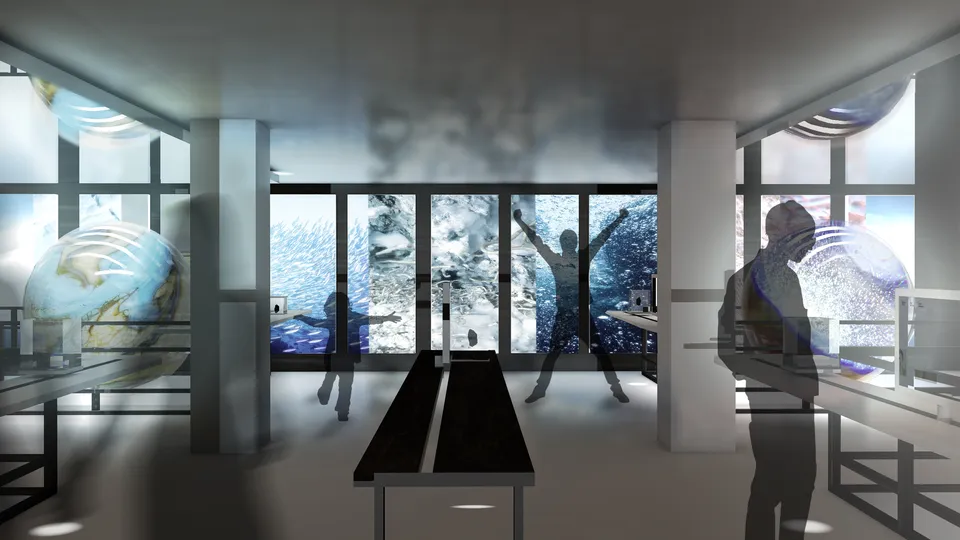Natural History Museum, Oslo
Under the Jurassic Sea
- Programme
- 2019
- Scale
- 2,133m²
- Client
- University of Oslo, The Natural History Museum
- Locations

- Programme
- 2019
- Scale
- 2,133m²
- Client
- University of Oslo, The Natural History Museum
Two million artefacts telling the history of our world
Oslo’s Natural History Museum has a truly outstanding collection. More than two million specimens include star objects like Ida, the oldest complete primate fossil in the world, and Stan the T. Rex.
We developed the concept for two of the museum’s galleries: Evolution of Life through Geological Time and Petroleum. Our concept pushed the museum towards a more aesthetically driven approach to interpreting and presenting their collections.
Making sense of complex concepts
Our challenge for the Evolution of Life through Geological Time gallery was making sense of deep time and the fossil record – two difficult to grasp concepts that the public often struggle to relate to. Our aim was to turn the almost incomprehensible into something simple and easy to understand. The gallery evolves around a sculptural installation of four everyday animals: a human, bird, plant and fish. Media is overlaid onto the installation to show evolutionary changes to the animals over the course of millions of years. A fossil library runs along the entire length of the gallery. Here, fossils are set within immersive environments – they are animated windows into a world long-gone. Discovery areas throughout the gallery put you in the shoes of an expert as you learn about the tools and processes palaeontologists use to understand the natural world.
The awesome power of oil
Our concept for The Petroleum Gallery shone a new light on oil: oil as you have never seen it before. It is a journey into the layers of earth to find oil. The ceiling suggests water – you are taken under the sea to explore the North Sea’s oil fields. A drill core simulator takes you down through layers of rock while interactives unpack different chapters in the formation of oil – from the Jurassic to the Quaternary period. Woven through the presentation are themes of oil maturation and oil migration – where and when did organic matter become oil? How did the oil find its way into different layers of the rock?
Our design concept makes a feature of the Natural History Museum’s beautiful art nouveau building, set within the city’s botanic gardens. The original showcases are kept intact, their age adding an air of authority and sense of tradition to the space. Against this backdrop, the immersive, innovative exhibition design contrasts to stunning effect.








